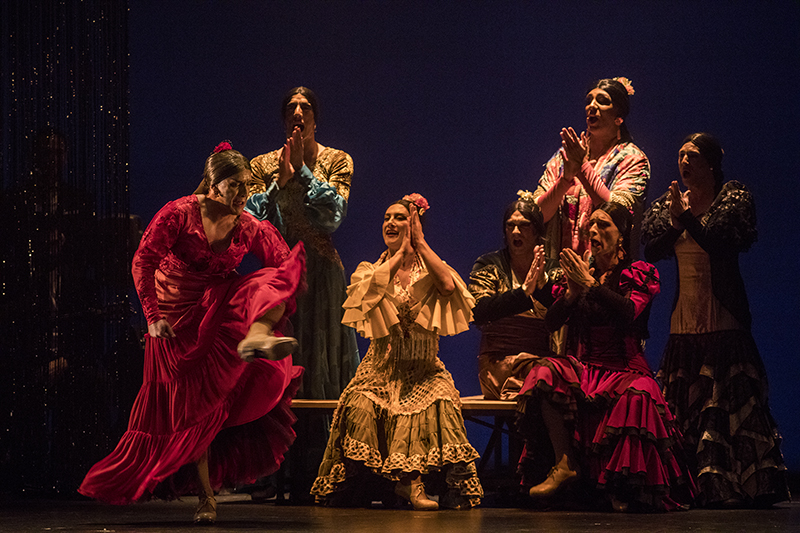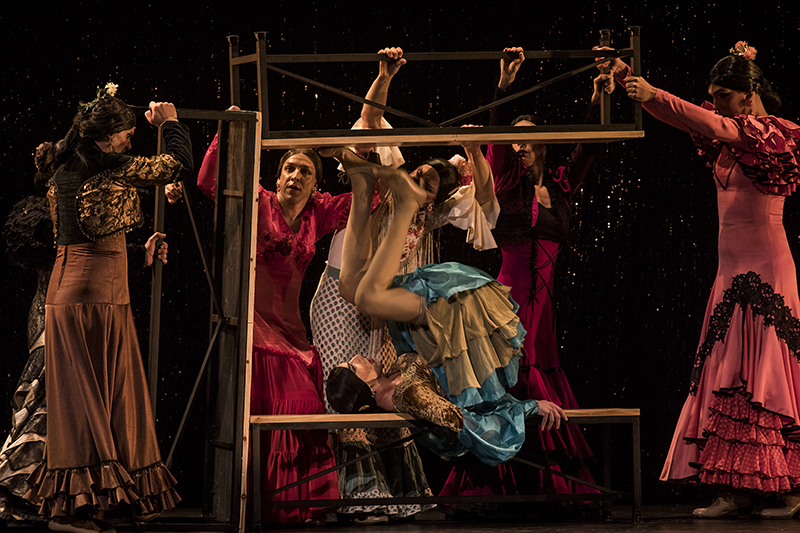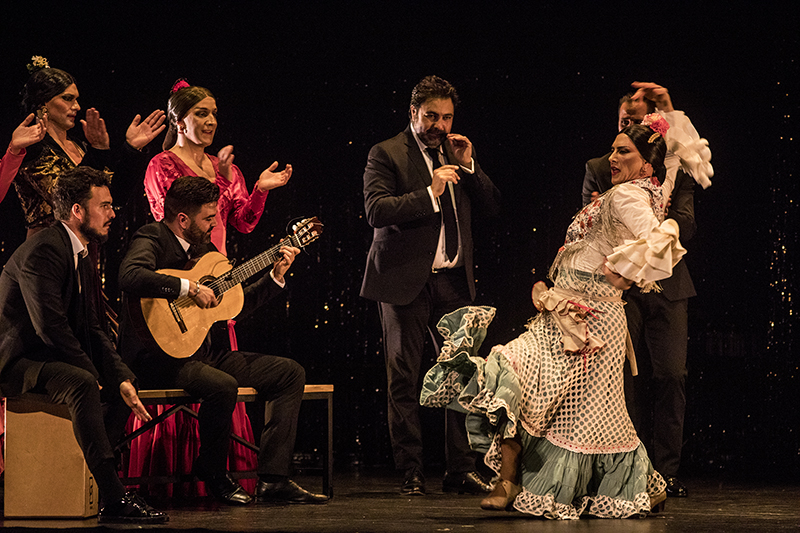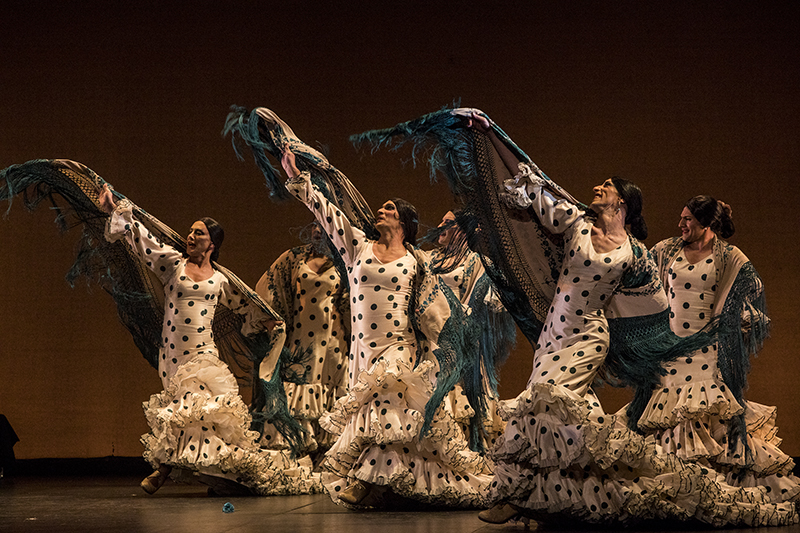Since presenting his first solo show in 2008, Manuel Liñán quickly took the flamenco world by storm, bringing a fresh and totally personal take on traditional flamenco. Unwilling to follow the contemporary trends that so many of his colleagues have chosen to explore, Liñán has found ways to take flamenco’s classic aesthetic and tweak it in such subtle ways that you know you’re watching something new and exciting but that doesn’t seek to completely reinvent the wheel.
Adored by the public and critics alike, and awarded Spain’s National Dance Prize in 2017, Liñán has been unafraid to take risks in his shows, although one might argue that the biggest he has yet to take was with his 2019 production ¡VIVA! (LIVE! the verb, not the adjective), which he performed to a sold-out audience at the Jerez Festival on Friday, February 28.

Liñán is a Jerez Festival darling, having received the festival’s 2012 Revelation Prize, awarded to up-and-coming dancers, and the Festival Critics Award in 2016. It was also at the Jerez Festival where the audience first saw Liñán dance with the trained skirt and fringe shawl traditionally worn by female flamenco dancers in the 2014 premiere of Belen Maya’s show Los Invitados (The Guests). The frenzy he whipped up with the skirt and shawl – which he moved deftly – lead him to incorporate it into his own shows, ultimately becoming his signature style, and now an expected number in each of his productions.
Over the last decade, more and more male dancers have been experimenting with the costuming and accoutrement of female flamenco dancers. It’s no longer surprising to see male dancers experimenting with non-gender conforming garb, but from some light experimentation to doing a flamenco show with an entirely male cast dressed in drag, there is a very large and courageous leap.
¡VIVA! is a flamenco drag show. There is no other way to describe it. Sporting wigs, padded hips and breasts, makeup and wonderful flamenco dresses, seven men – of various heights and sizes – dressed as women take to the stage. As with all drag shows, ¡VIVA! does not take itself too seriously. Humor abounds, we see the competition between dancers, the hyper-femininity, the desire for attention and the petty jealousies, all exaggerated to great comedic effect.

Dancer Hugo López, who stands at least six feet tall with an extremely slender build, brings both the romance and hysterics to his role. His lithe figure carries a vaguely balletic and extremely elegant feminine aesthetic, making the opening of his solo, with its references to Spanish classical dance, fluid and graceful. But even when López transitions into full-blown flamenco he maintains his femininity, but at this point more emboldened and aggressive rather than winsome and ethereal.
In a scene that will not soon be forgotten, López’s fellow dancers crouch to the floor to closely watch his feet tap across the stage. As though they’ve never seen feet move so quickly and rhythmically, they soon put him to the test. Creating a cube with the benches that serve as the show’s only set, López rolls onto his back, with knees bent at a right angle, he taps his feet across one side of the cube up to the top of the cube and finally, with his knees hovering around his head, looking like a failed attempt at a backwards roll, and his beautiful turquois flamenco dress bunched at his hips, he taps down the side of the box just behind his head. It is a spectacle that is, in its absurdity and flexibility, amazing to watch.
Although humor is ever-present and a very welcomed aspect of the show, it does not take precedence over the quality of the choreography and dance. Liñán has always surrounded himself with the highest caliber of dancers, and the cast of ¡VIVA! in its entirety is exceptional.

Liñán’s goal with ¡VIVA! was to have each male dancer explore the femininity inside him and bring it to his character. This diversity in how men perceive femininity or the feminine aspects of their own personality is entirely evident in each individual dance. Jonatan Miró’s solo performance is denser and weightier, more serious and rigid, and at least to this spectator, still strongly masculine. On the other end of the spectrum is Manuel Betanzos, whose deeply sensual and spirited solo oozed womanly voluptuousness. And then nestled in between is Liñán himself, whose dancing was so comfortable and devoid of mannerism that it just seemed entirely his own regardless of gender.
With a run time of nearly two hours, there is never a dull minute, and the show does total justice to its title. Liñán’s latest creation makes the strongest possible argument for living life to the fullest, being true to oneself always no matter what anyone else has to say and having the courage to do what makes you happy. A lot of this subtext comes through the lyrics of the songs that accompany the dance, which will sadly be lost to non-Spanish speaking audiences, but the ethos is there, and the message of acceptance is palpable.


